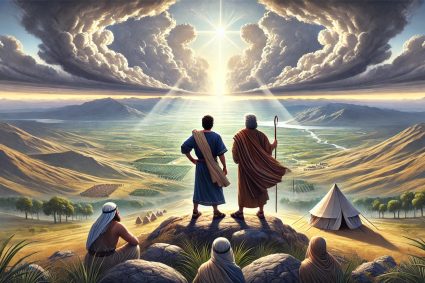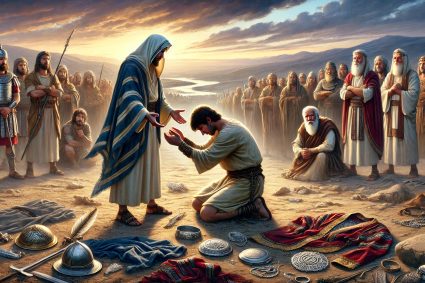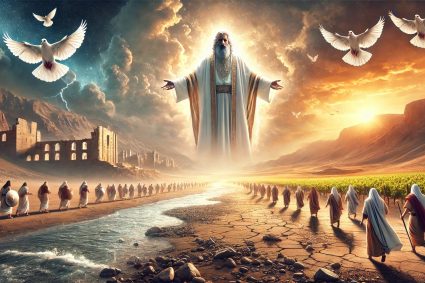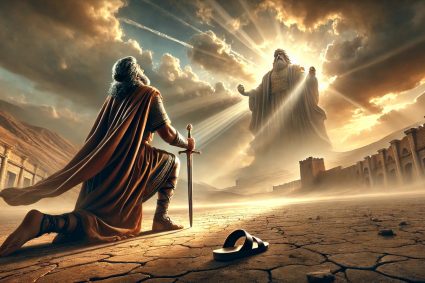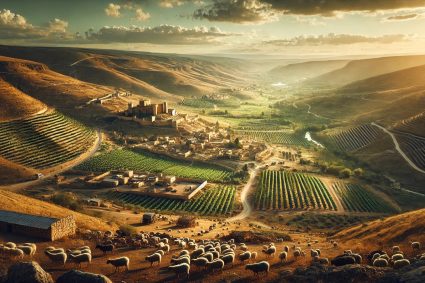
Series LESSONS OF FAITH FROM JOSHUA with Pastor Mark Finley
Lesson 9.Heirs of the Promise, Prisoners of Hope
Between Loss and Promise – God’s Plan with His People
Introduction:
God’s promises to His people were always more than material blessings – they were expressions of His faithfulness, care, and redemptive plan. The Promised Land played a special role in this: it symbolized freedom, identity, and the presence of God. Yet ownership of the land was not an automatic right, but was tied to the covenant with God. Israel had to learn that grace is a gift to be received through trust and obedience. Despite failure and exile, God’s promise remained – with a view toward ultimate restoration. In Christ, we see that our true inheritance goes far beyond earthly borders: it is the new earth where God will dwell with His people forever.
Content:
9.1 Eden and Canaan
Two Gardens of Promise
The Garden of Eden was humanity’s first home – a place of abundance, closeness to God, and perfect harmony. Through the Fall, Adam and Eve lost not only their home but also direct communion with God. Eden became a symbol of what was lost through sin. Later, God gave the patriarchs the promise of the land of Canaan – a new symbol of divine care and hope. Like Eden, Canaan was a gift given solely by God’s grace, not human merit. As Adventists today, we live in faith toward an even greater promise – the heavenly Canaan – and are called, like the patriarchs, to inherit this hope through faith and perseverance.
9.2 The Land as a Gift
Living in Covenant with God
The Promised Land was not Israel’s property in the modern sense, but a gift from God that could only be retained within the framework of covenantal obedience. This special relationship emphasized their complete dependence on God’s faithfulness, provision, and blessing. The land was a visible sign of divine grace and was meant to constantly remind Israel of the Giver – not just the gift. Transitioning from Egypt’s controlled irrigation to Canaan’s rain-dependent agriculture, God taught His people to trust in Him. As the land’s true owner, God remained Lord – Israel were merely guests. Likewise, we today are spiritual strangers and pilgrims, looking forward to a better homeland – a city whose builder and maker is God (Hebrews 11:10).
9.3 The Challenge of the Land
Receiving Grace, Living Responsibly
Although the Promised Land was a gift from God, the Israelites faced real challenges in taking possession of it by trusting in God’s leadership. Their military weakness made it clear: victory would not be by their own strength, but through divine grace. Yet the gift came with responsibility – the land had to be faithfully inhabited, cared for, and defended. The same applies to Christians today: salvation is a gift, but it demands a response of obedience and perseverance in faith. God works in us, but we are called to live in “obedience of faith” (Philippians 2:12). Life in God’s kingdom means actively and responsibly living out the inheritance we have received.
9.4 The Jubilee
Justice, Grace, and New Beginnings in God’s Rhythm
The Year of Jubilee expressed God’s social justice and care for all people – especially the weak. It provided regular opportunities for economic release, social restoration, and a fresh start for the disadvantaged. Unlike Egypt’s unjust systems, God’s laws prevented permanent poverty and land loss. The Sabbath year and the Year of Jubilee reminded Israel that the land belongs to God and they were merely stewards of His gifts. These principles call us today to live lives of solidarity, mercy, and trust rather than exploitation. The Sabbath helps us embody God’s principle of equality – free from greed, performance pressure, and social inequality.
9.5 The Land Restored
The Final Promise Beyond Borders
Israel’s return from Babylonian exile was a sign of divine faithfulness, but only a foretaste of a much deeper restoration. God showed that His relationship with His people was not limited to geographic borders, but depended on their hearts. The Old Testament prophets announced an even greater return – under the rule of a future Davidic king, fulfilled in Jesus Christ. In Him, all promises were realized – not only for Israel, but for all believers. In the New Testament, the Promised Land becomes a symbol of our eternal home with God – the new earth. This hope is secured by Jesus’ death and resurrection and will be fully realized at His return, when God’s people will enter their true, eternal inheritance.
9.6 Summary
Living Between Gift and Hope
Lesson 9 shows that the Promised Land was a central element in God’s plan for His people – not as a reward, but as an expression of divine grace. From Eden to Canaan, it is clear that God not only wanted to give His children a home but also to lead them into a deep relationship with Himself. Possessing the land came with challenges that required faith, obedience, and trust in God’s guidance. Principles such as the Year of Jubilee highlight God’s concern for justice, renewal, and equality. Even though Israel failed, God’s promise remained and was ultimately fulfilled in Jesus Christ. Our hope as Christians now points toward the true Promised Land – the new earth, where God Himself will dwell with His people forever.
(Visited 1 times, 1 visits today)

